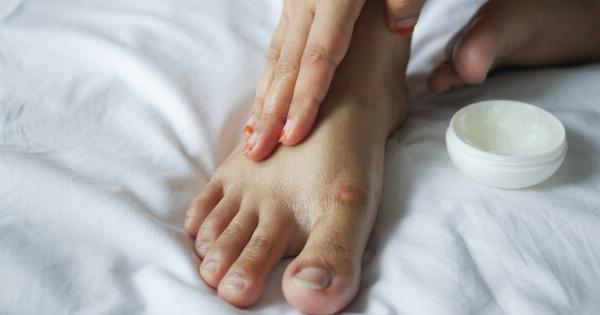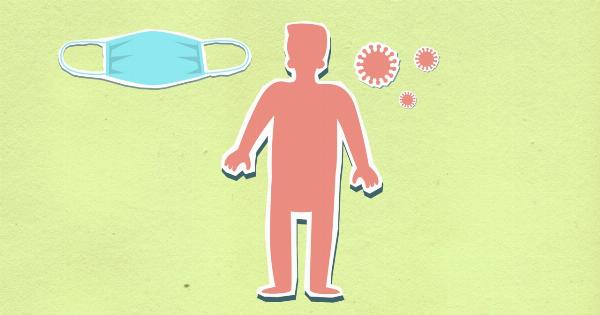Onychomycosis, commonly known as nail fungus, is a fungal infection that affects the nails. It is a prevalent condition that can cause discomfort and embarrassment for those who suffer from it.
In this article, we will explore the causes and symptoms of onychomycosis and discuss various treatment options available.
Causes of Onychomycosis
Onychomycosis is primarily caused by different types of fungi, including dermatophytes, yeasts, and non-dermatophyte molds. The following factors can increase the risk of developing this fungal infection:.
Poor Foot Hygiene
Inadequate foot hygiene, such as not keeping the feet clean and dry, can create an environment where fungi thrive.
It is important to regularly wash and dry your feet thoroughly, especially after exposure to damp environments like swimming pools or locker rooms.
Wearing Tight-Fitting Shoes
Wearing tight, ill-fitting shoes can contribute to the development of onychomycosis. Such shoes can cause excessive sweating and provide a warm, moist environment that favors fungal growth.
Opting for breathable footwear and wearing moisture-absorbing socks can help prevent the infection.
Walking Barefoot in Public Areas
Walking barefoot in areas where fungi are commonly found, such as public swimming pools, saunas, and showers, increases the risk of onychomycosis. Fungi can easily penetrate the nails when they come into contact with infected surfaces.
To reduce the risk, it is recommended to wear flip-flops or sandals in such public areas.
Pre-Existing Nail Conditions
Individuals with pre-existing nail conditions, such as nail psoriasis or injury to the nail, are more susceptible to developing onychomycosis.
The compromised nail structure provides an entry point for fungi, making it easier for them to invade and cause an infection.
Weak Immune System
A weakened immune system can make individuals more prone to fungal infections, including onychomycosis.
Conditions such as diabetes, HIV/AIDS, or undergoing chemotherapy can lower the body’s ability to fight off infections, allowing fungi to proliferate and cause nail fungus.
Symptoms of Onychomycosis
The symptoms of onychomycosis can vary depending on the type and severity of the infection. Common signs and symptoms include:.
Nail Discoloration
One of the primary symptoms of onychomycosis is nail discoloration. The infected nail may turn yellow, brown, green, or white. In some cases, the nail may become thickened or crumbly, further compromising its appearance.
Changes in Nail Texture
The texture of the affected nail can change due to onychomycosis. It may become rough, brittle, or develop tiny pits or ridges. The nail may also separate from the nail bed, a condition known as onycholysis.
Nail Thickening
In some cases, onychomycosis can cause the affected nail to thicken. This can make it difficult to trim or perform regular nail care, leading to further discomfort or pain.
Nail Odor
An unpleasant odor may be present in nails affected by onychomycosis. The odor is often caused by the buildup of debris and the presence of fungi in and around the nail.
Nail Brittleness and Crumbling
The infected nail can become brittle and may start to crumble at the edges. This can eventually lead to nail loss if not treated promptly.
Nail Deformation
In advanced cases of onychomycosis, the nail may become deformed, taking on an irregular shape. This can cause further discomfort and affect the overall appearance of the nail.
Nail Pain and Discomfort
Onychomycosis can cause pain and discomfort, especially when the nail becomes thickened, brittle, or ingrown. The infection may also spread to the surrounding skin, leading to inflammation and additional discomfort.
Itching and Burning Sensation
Some individuals with onychomycosis may experience itching and a burning sensation around the affected nail. This can be quite bothersome and may worsen if left untreated.
Conclusion
Onychomycosis is a common fungal infection that affects the nails. It can be caused by various factors including poor foot hygiene, tight-fitting shoes, walking barefoot in public areas, pre-existing nail conditions, and a weak immune system.
Recognizing the symptoms of onychomycosis, such as nail discoloration, changes in nail texture, nail thickening, nail odor, brittleness and crumbling, nail deformation, pain and discomfort, as well as itching and burning sensation, is crucial for early diagnosis and seeking appropriate treatment. If you suspect you have onychomycosis, it is recommended to consult a healthcare professional for accurate diagnosis and tailored treatment options to effectively manage the condition.































